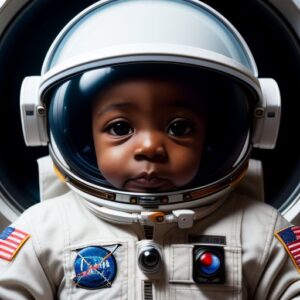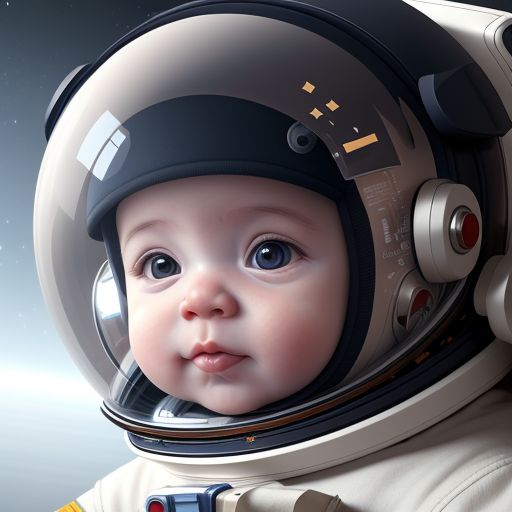The journey of human life begins in the womb, a remarkable environment that nurtures and sustains a developing fetus. Interestingly, the life support systems required for astronauts in space share some striking parallels with those provided by a mother’s body. This article explores the fascinating correlations between the life support needs of astronauts and those of a developing baby, highlighting how both scenarios require carefully controlled environments to sustain human life and that the necessity of life support don’t eliminate the designation of the person on life support as a human.
Oxygen Supply: Breathing in Space and in the Womb

One of the most critical life support functions for both astronauts and fetuses is the provision of oxygen. In space, astronauts rely on complex life support systems to maintain a breathable atmosphere[1]. These systems must remove carbon dioxide and replenish oxygen, much like the human respiratory system.
Similarly, a developing fetus receives oxygen through the placenta, which acts as a natural life support system. The mother’s lungs oxygenate her blood, which then passes through the placenta, allowing oxygen to diffuse into the fetal bloodstream. This process mirrors the oxygen recycling systems used in spacecraft, where carbon dioxide is removed and oxygen is replenished to maintain a habitable environment.
Nutrition and Waste Management
Astronauts on long-duration space missions require carefully planned nutrition and waste management systems. Space agencies must ensure that astronauts have access to balanced diets and that waste is properly handled to maintain a safe living environment[4].
In the womb, the placenta serves a similar function. It provides essential nutrients to the developing fetus and removes waste products. The umbilical cord acts as a lifeline, much like the supply chains that keep astronauts nourished in space. Both scenarios involve the efficient delivery of nutrients and the removal of waste to maintain a healthy living environment.
Temperature Regulation
Maintaining a stable temperature is crucial for both astronauts and developing fetuses. Spacecraft must have sophisticated temperature control systems to protect astronauts from the extreme temperature fluctuations of space[2].
The mother’s body provides a similar service for the fetus, maintaining a constant temperature that is optimal for development. This thermoregulation is critical for the proper growth and functioning of both astronauts and unborn babies.
Protection from Radiation
One of the significant challenges of space travel is protecting astronauts from harmful cosmic radiation. Space agencies employ various shielding techniques and monitor radiation exposure to minimize risks to astronauts’ health[3].
Interestingly, the mother’s body also provides a degree of radiation protection for the developing fetus. While not as extreme as the cosmic radiation in space, the mother’s tissues help shield the fetus from everyday environmental radiation, demonstrating nature’s built-in protective mechanisms.
Psychological Support
While often overlooked, psychological support is a crucial aspect of life support systems for astronauts. Long-duration space missions can be mentally challenging, requiring careful attention to the mental health of crew members[2].
In a similar vein, the emotional state of an expectant mother can significantly impact the developing fetus. Stress hormones can cross the placenta, affecting fetal development. This highlights the importance of emotional well-being in both scenarios.
Gravity Considerations
One area where the needs of astronauts and fetuses diverge is in their relationship to gravity. Astronauts must contend with the effects of microgravity, which can lead to muscle atrophy and bone density loss. Countermeasures such as exercise regimens are essential to maintain astronaut health[3].
In contrast, the fetus develops in a fluid-filled environment where the effects of gravity are minimized. This allows for rapid growth and development without the constraints of Earth’s gravitational pull.
Conclusion
The parallels between the life support needs of astronauts and developing fetuses are remarkable, underscoring the fundamental requirements for sustaining human life. Many argue that because a baby in the womb can’t survive without the mother as life support it can justifiably be killed. However, they forget that the requirement for life support don’t make a human a non-life form. Both scenarios involve carefully controlled environments that provide oxygen, nutrition, waste management, temperature regulation, and protection from external threats.
As we continue to explore the frontiers of space and push the boundaries of human endurance, it’s worth remembering that the miracle of life itself begins in an environment that shares many similarities with the life support systems we design for space travel. This comparison not only highlights the ingenuity of human engineering but also the incredible complexity and efficiency of natural biological systems.
Astronauts are indeed people too, and their journey through space echoes the very first journey we all take – from conception to birth. As we look to the stars and dream of colonizing other planets, we carry with us the blueprint for sustaining life, written in the most intimate and personal of spaces: a mother’s womb.
Citations:
[2] https://www.ncbi.nlm.nih.gov/books/NBK223777/
